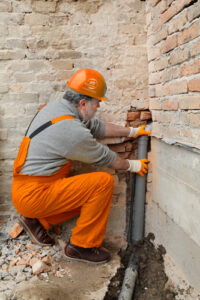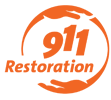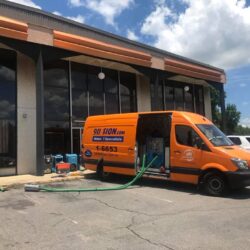Dealing with a sewage spill or backup is not just a daunting task, it can also be a hazardous one. As a homeowner, your health and safety are of the utmost importance. You may feel lost and unsure of what to do, as cleaning up sewage is a job that should never be taken lightly. But don’t worry, with the right knowledge and approach, you can navigate through this challenge safely and effectively. Here’s our guide on the essential dos and don’ts of sewage cleanup that can help you get through this tough situation without putting your health and property in jeopardy.
Understanding Sewage Cleanup
Before diving into the dos and don’ts, it’s important to have a basic understanding of sewage cleanup. Sewage cleanup involves the removal and disinfection of sewage-contaminated areas in a home or property. This includes dealing with sewage backups, leaks, or overflows that can occur due to various reasons, such as clogged pipes, heavy rainfall, or sewer line issues.
Dos of Sewage Cleanup
1. Assess the Situation: The first step in any sewage cleanup is to assess the situation. Determine the extent of the damage, identify the source of the problem, and evaluate the affected areas. This assessment will help you develop an appropriate plan for cleanup and restoration.
2. Ensure Personal Safety: Always prioritize your safety during sewage cleanup. Wear protective gear, such as gloves, goggles, and boots, to prevent direct contact with sewage and minimize exposure to harmful pathogens. If the contamination is severe or widespread, consider evacuating the premises and seeking professional help.
3. Stop the Source of Contamination: To prevent further damage, it’s crucial to stop the source of contamination. If the issue stems from a burst pipe or a clogged sewer line, turn off the water supply or seek assistance from a plumber. Stopping the flow of sewage is essential to contain the problem.
4. Call Professionals: Sewage cleanup is a complex and potentially hazardous process. It is highly recommended to seek professional help. Experienced sewage cleanup specialists have the necessary equipment, expertise, and knowledge to handle the situation safely and efficiently. They will also ensure thorough disinfection and proper restoration of your property.
help. Experienced sewage cleanup specialists have the necessary equipment, expertise, and knowledge to handle the situation safely and efficiently. They will also ensure thorough disinfection and proper restoration of your property.
5. Isolate the Affected Area: During cleanup, it’s essential to isolate the affected area to prevent cross-contamination. Close doors and seal off the area using plastic sheets or barriers. This step will minimize the spread of bacteria and odors to other parts of your home.
6. Wear Protective Gear: As mentioned earlier, wearing appropriate protective gear is crucial. Disposable gloves, masks, goggles, and boots are essential to protect yourself from direct contact with sewage and potential airborne contaminants. Remember to dispose of used protective gear properly and avoid reusing them to prevent the spread of bacteria.
7. Begin Cleanup and Removal: Once you have taken the necessary safety precautions, you can begin the cleanup process. Start by removing any standing water using pumps or wet/dry vacuums. Dispose of contaminated materials such as carpets, furniture, and personal belongings that cannot be effectively cleaned and sanitized. Thoroughly clean and disinfect all surfaces, including walls, floors, and fixtures, using appropriate disinfectants recommended for sewage cleanup.
Don’ts of Sewage Cleanup
1. Don’t Delay Cleanup: Sewage spills or backups require immediate attention. Delaying the cleanup process can result in further damage to your property and increase the risk of health hazards. Prompt action is crucial to prevent the spread of contamination and minimize the extent of the damage.
2. Don’t Use Household Cleaning Products: When dealing with sewage cleanup, avoid using regular household cleaning products. These products may not effectively kill the bacteria and pathogens present in sewage. Instead, use specialized disinfectants and cleaners specifically designed for sewage cleanup. These products are formulated to eliminate harmful microorganisms and ensure thorough sanitation.
3. Don’t Neglect Proper Ventilation: Proper ventilation is essential during sewage cleanup. Open windows and doors to allow fresh air to circulate and aid in drying out the affected area. Use fans and dehumidifiers to facilitate the drying process. Adequate ventilation helps prevent the growth of mold and mildew, which can further compromise the air quality in your home.
4. Don’t Overlook Hidden Damage: Sewage backups can cause hidden damage to your property, such as structural issues, electrical damage, or compromised insulation. Don’t overlook these potential issues during the cleanup process. If you notice any signs of structural damage or suspect electrical problems, consult a professional to assess and address these issues before restoring your home.
5. Don’t Ignore Professional Help: While it may be tempting to tackle sewage cleanup on your own, it’s crucial to understand the limitations and potential risks involved. Sewage cleanup requires specialized knowledge, equipment, and expertise. Professional sewage cleanup services have the necessary training and experience to handle the task effectively. Ignoring professional help can lead to inadequate cleanup, increased health risks, and potential long-term damage to your property.
Conclusion
Sewage cleanup is a challenging and potentially hazardous job for homeowners. By following the dos and don’ts outlined in this guide, you can approach sewage cleanup in a safe and efficient manner. Remember to prioritize your safety, seek professional assistance when necessary, and adhere to proper cleaning and disinfection protocols. With proper care and attention, you can restore your home to a clean and healthy environment.
FAQs
1. Can I clean up sewage on my own?
While you can attempt to clean up sewage on your own, it is highly recommended to seek professional help. Professional sewage cleanup services have the expertise and equipment to handle the task safely and effectively.
2. How long does sewage cleanup take?
The duration of sewage cleanup depends on the extent of the damage and the size of the affected area. It can range from a few days to several weeks. Prompt action and professional assistance can expedite the process.
3. Can I salvage my belongings after a sewage backup?
In some cases, salvageable belongings can be restored through proper cleaning and disinfection. However, porous materials like carpets, mattresses, and upholstered furniture are often difficult to salvage and may need to be discarded.
4. How can I prevent sewage backups in the future?
Regular maintenance of your plumbing system, including drain cleaning and inspections, can help prevent sewage backups. Avoid flushing items that can clog the pipes, and address any plumbing issues promptly.


